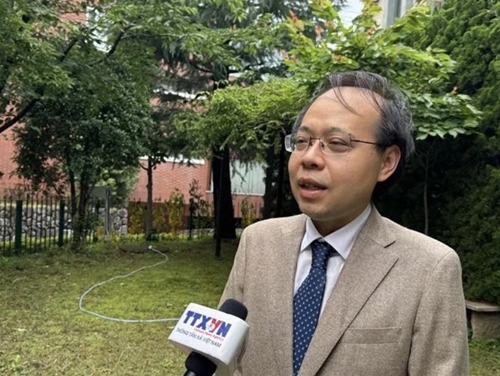In a recent interview with the Vietnam News Agency, Professor Pham Nam Hai from the Institute of Science Tokyo said that the resolution establishes a target of allocating 2% of GDP annually to science – technology, with 60% of this investment coming from enterprises who will engage in science – technology development.
    |
 |
|
Professor Pham Nam Hai from the Institute of Science Tokyo grants an interview to the VNA. |
This marks the first time in the country's history that such a substantial investment goal for science and technology has been clearly defined relative to the country's economic potential, Hai stated.
Vietnamese scientists in Japan could contribute to this process through various channels, he said, highlighting they could participate in technology training programs, particularly in semiconductor and AI, for Vietnamese students pursuing doctoral research. Besides, they could provide consulting services for domestic enterprises, guiding them towards new research directions that can create specific products with practical application in the domestic market.
Amidst global digital transformation, the professor underscored the rise of AI as central to an emerging AI economy. Vietnam has the potential to engage in the AI technology chain through two primary approaches. On the software side, Vietnam could leverage open-source models developed by advanced economies while adapting and localizing them to Vietnamese conditions. To do that, he also underscored the need for Vietnam to build large-scale data centers.
Besides, the country should develop hardware capabilities and set up AI hardware centers. These platforms will support AI models specifically customized for Vietnam, applicable across numerous sectors. This includes not only cloud-based AI models but also Edge AI models that operate on peripheral devices, potentially integrated into everyday products like televisions and manufacturing applications. Hai said the models will significantly enhance the efficiency of goods production and industrial processes as compared to human-controlled systems.
Hai emphasized that the key to success in scientific research lies in the collaboration between private enterprises and universities. When private companies place orders with universities, academic institutions receive funding for operations while providing students with opportunities to handle real-world problems.
In turn, businesses benefit from cutting-edge technologies developed at minimal cost. This allows universities to operate more autonomously and equips graduates with the skills and pathways to the workforce. The professor underscored that this collaboration represents a crucial key to developing Vietnam's science and technology research chain.
He suggested the State implement policies to facilitate deeper business participation in science – technology development chains. He cited Japan’s tax incentives for R&D investments as a model worth replicating, which encourage companies to invest in the activity rather than purchasing technology from external sources.
Source: VNA